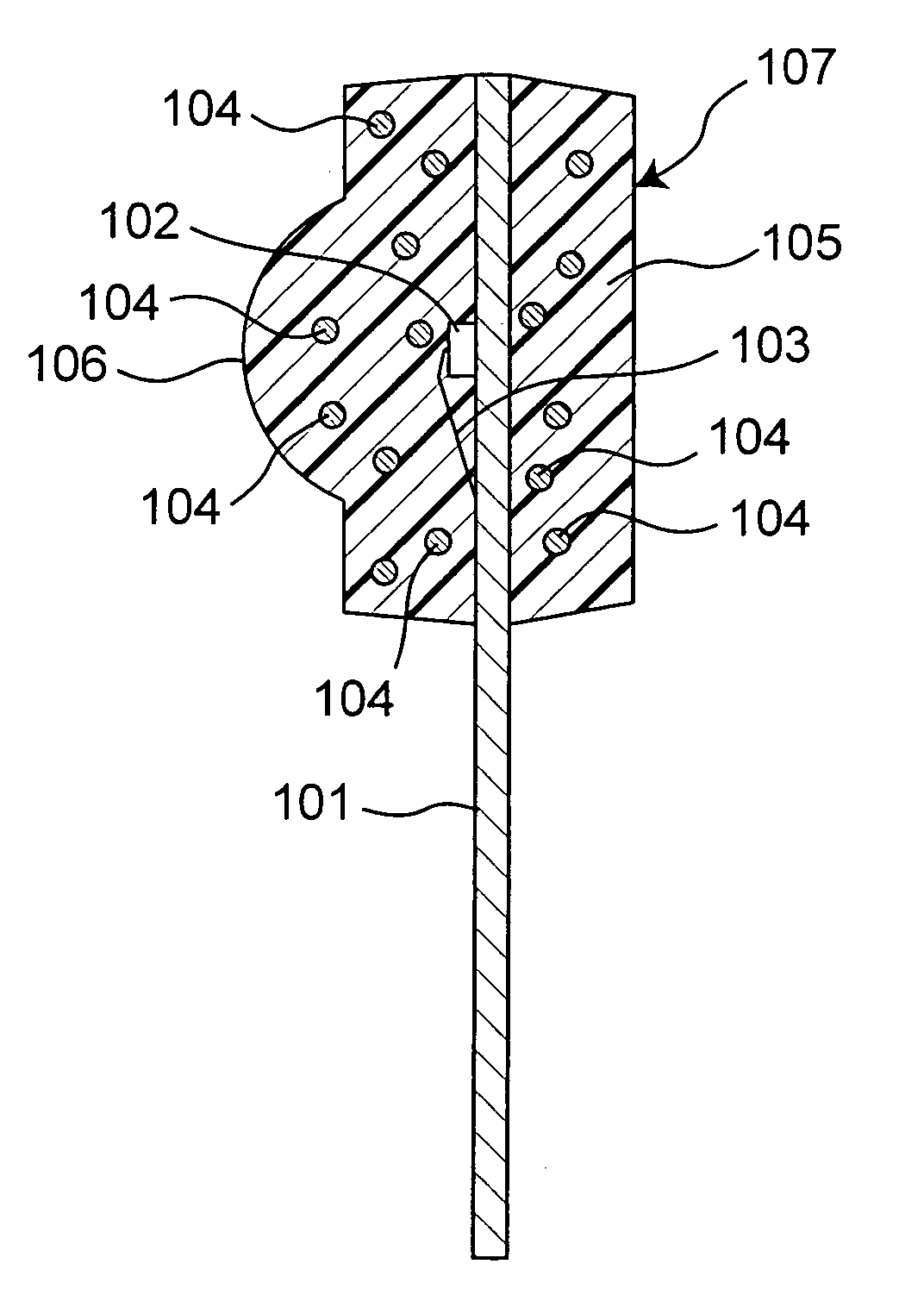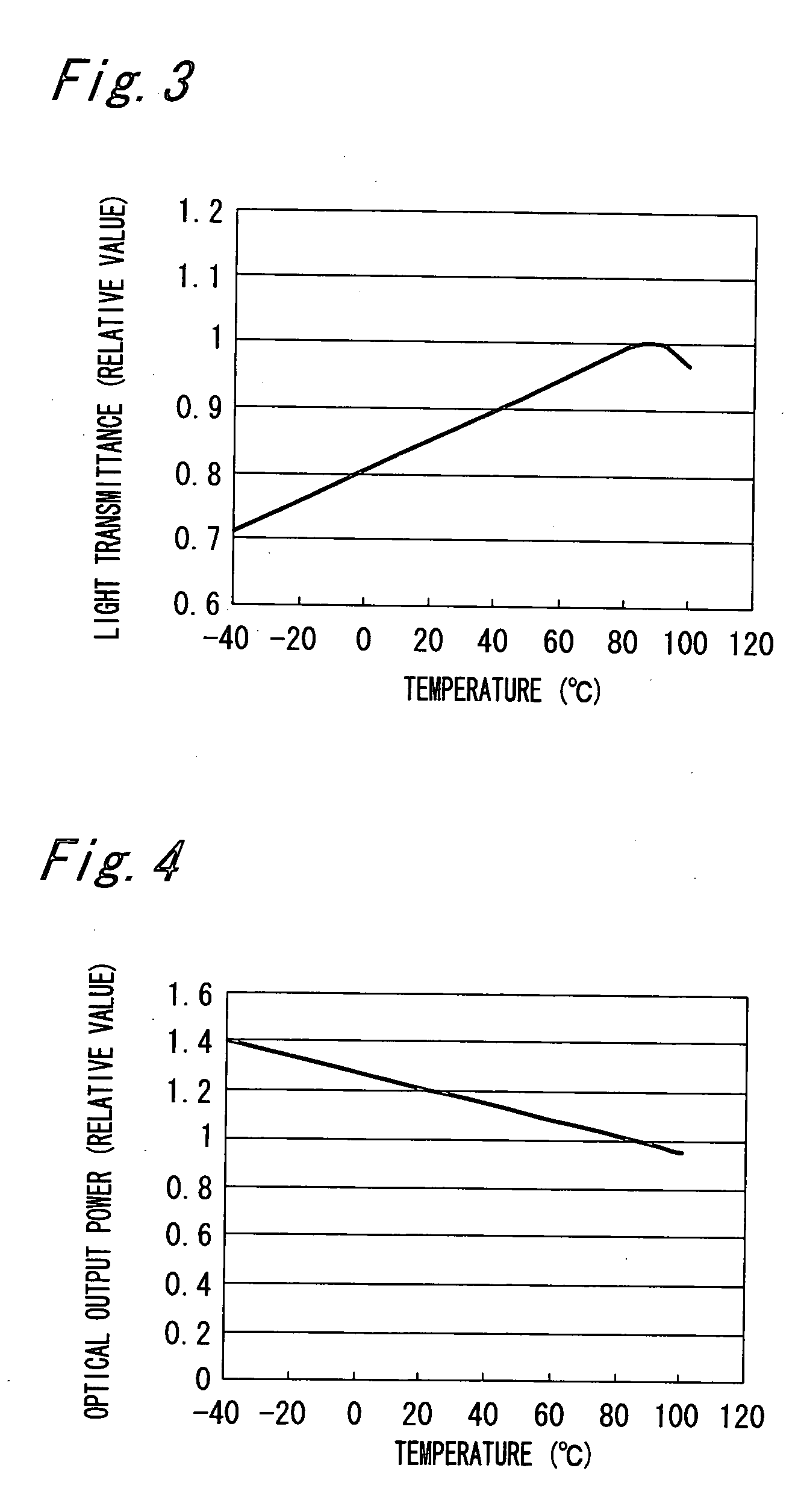Optical semiconductor device, optical communication device, and electronic equipment
- Summary
- Abstract
- Description
- Claims
- Application Information
AI Technical Summary
Benefits of technology
Problems solved by technology
Method used
Image
Examples
first embodiment
[0090]FIGS. 1A and 1B are views showing an optical semiconductor device of a first embodiment of the present invention. In detail, FIG. 1A is a front see-through view of the optical semiconductor device of the first embodiment, and FIG. 1B is a side see-through view of the optical semiconductor device of the first embodiment.
[0091] The optical semiconductor device has a lead frame 1, an LED 2 as one example of the optical semiconductor element, a wire 3 and a light-permeable mold resin 4 to which filler is added.
[0092] The wire 3 is constituted of a wire that has electrical conductivity, such as an Au wire, an Ag wire or an Al wire. Moreover, the mold resin 4 is formed by adding glass as filler to an epoxy resin. As the epoxy resin, various types of commercially available epoxy resins are usable. Also, as the glass filler, any type of commercially available glass filler is usable. Accordingly, the “epoxy resin” and the “glass filler” herein should not be interpreted as being limit...
second embodiment
[0113]FIGS. 6A and 6B are views showing an optical semiconductor device according to a second embodiment of the present invention. In detail, FIG. 6A is a front see-through view of the optical semiconductor device of the second embodiment, and FIG. 6B is a side see-through view of the optical semiconductor device of the second embodiment.
[0114] The optical semiconductor device of the second embodiment differs from the optical semiconductor device of the first embodiment essentially in that a photodiode (PD) 62, which is a photodetector, is adopted in place of the light-emitting element (LED) as the optical semiconductor element.
[0115] Regarding the optical semiconductor device of the second embodiment, no description will be provided for the same effects and advantages as those of the optical semiconductor device of the first embodiment and its modification examples, and only the construction and the effects and advantages different from those of the optical semiconductor device o...
third embodiment
[0119]FIGS. 7A and 7B are views showing an optical semiconductor device of a third embodiment of the present invention. In detail, FIG. 7A is a front see-through view of the optical semiconductor device of the third embodiment, and FIG. 7B is a side see-through view of the optical semiconductor device of the third embodiment.
[0120] The optical semiconductor device of the third embodiment differs from the optical semiconductor device of the first embodiment essentially in that a driving integrated circuit 76 for driving an LED 72 is provided.
[0121] Regarding the optical semiconductor device of the third embodiment, no description will be provided for the same construction and effects as those of the optical semiconductor device of the first embodiment and its modification examples, and only the construction and effects different from those of the optical semiconductor device of the first embodiment will be described.
[0122] The optical semiconductor device has a lead frame 71, an L...
PUM
 Login to View More
Login to View More Abstract
Description
Claims
Application Information
 Login to View More
Login to View More - R&D
- Intellectual Property
- Life Sciences
- Materials
- Tech Scout
- Unparalleled Data Quality
- Higher Quality Content
- 60% Fewer Hallucinations
Browse by: Latest US Patents, China's latest patents, Technical Efficacy Thesaurus, Application Domain, Technology Topic, Popular Technical Reports.
© 2025 PatSnap. All rights reserved.Legal|Privacy policy|Modern Slavery Act Transparency Statement|Sitemap|About US| Contact US: help@patsnap.com



